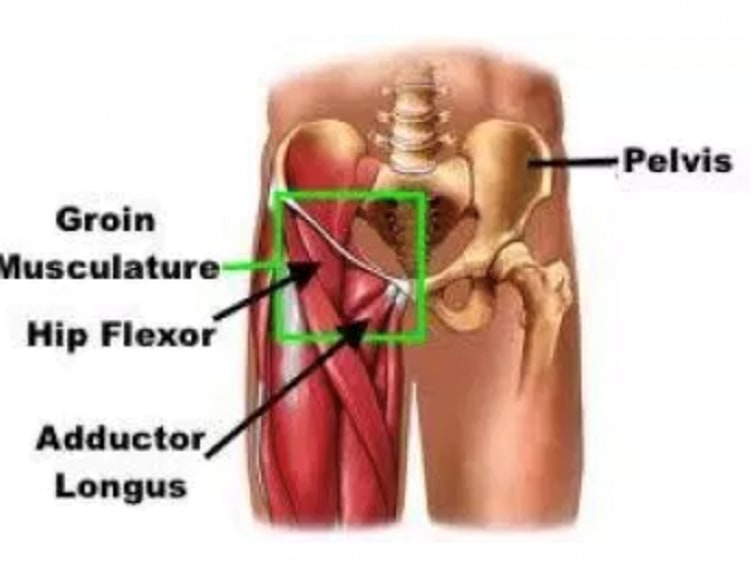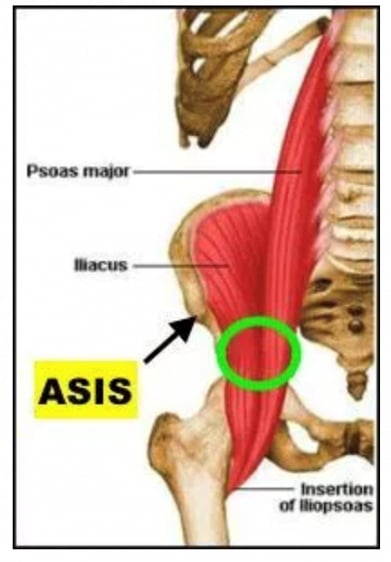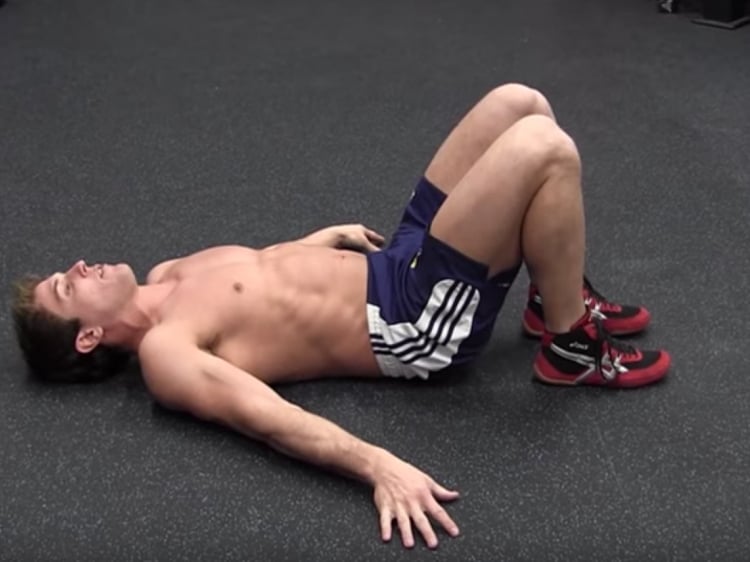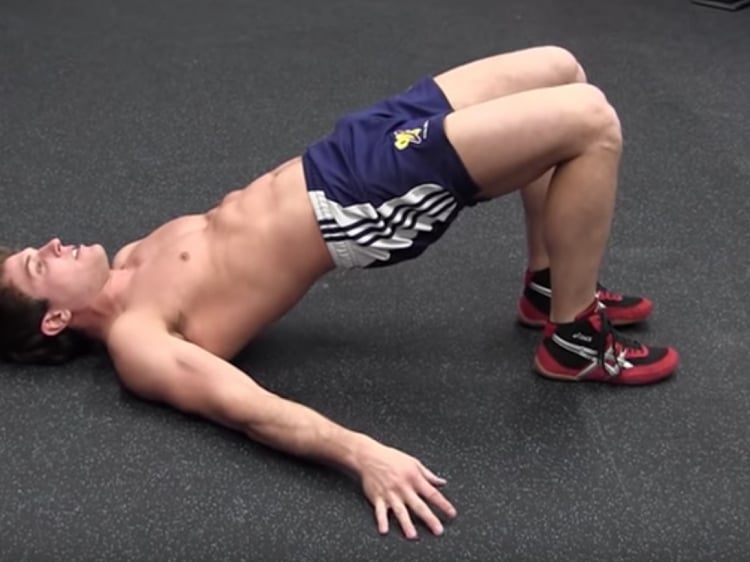Fixing Hip Flexor Pain
Post details
Posted on 16th March 2020
Hip flexor pain is particularly common amongst athletes but it is also often seen in the more sedentary.
Generally, consistent anterior (front) hip pain is known as Iliopsoas syndrome.
The Cause of Iliopsoas Syndrome
A hip flexor injury usually occurs differently to, for example, a pulled groin muscle. An adductor/groin strain will often occur at a specific time (acute injury) and the individual will be able to pinpoint when and how exactly it happened, i.e. whilst jumping sideways, changing direction quickly, squatting or deadlifting which then leads to a sharp pain in the inner groin area.

Iliopsoas syndrome however, often occurs due to overuse (chronic injury) of the hip flexors, becoming a cumulative issue over time and resulting in tight, hyper-facilitated and shortened iliopsoas muscles. It can present itself in several different ways:
- Iliopsoas tendinopathy (inflammation and/or degrading of the tendon)
- Compression of the underlying bursa sac
- Snapping of the muscle over bony areas of the pelvis resulting in a “popping” feeling and sound
- Changes in posture and position (anterior tilt) of the pelvis and curvature (lordosis – excessive curvature) of the lumbar spine
How to fix the issue
Mobility
If you are experiencing stiffness in your iliopsoas muscles and reduced range of motion at the hip, then your first port of call should be to work on improving your flexibility in this area. This can be achieved through soft tissue mobilisation and stretching the hip flexors.
Soft Tissue Massage
As with any injury or discomfort in the lower body, you should assess length-tension of all the muscle groups in the hips and legs to discover which areas are tight and short and could be contributing to this discomfort, and then you should aim to release and lengthen them in order to re-establish structural balance. If you are experiencing anterior hip pain, some commonly tight areas are often the quadriceps, hip flexors, TFL, IT bands, adductors, internal rotators of the hip, and the anterior fibres of the glute medius. In order to release these areas, we can perform soft tissue mobilisation. Using a trigger point ball or foam roller can be an effective way to decrease tension in stiff muscles and release myofascial trigger points that limit your flexibility and movement, which may be causing your pain.
For hip flexor pain specifically, one of the most common trigger points can be found on the inside of the ASIS in a group of muscles known as the iliopsoas.

To release this area:
- Lie on your stomach and place the trigger point ball just to the inside of the ASIS which will likely be painful to put pressure on.
- Slowly roll the ball around and find the tender area of the muscle.
- Apply pressure to this point for 1-2 minutes before slowly moving back and forward over this area.
Next we should look to passively stretch this area:
½ Kneeling/Lunge Stretch
- Get into a lunge position with one knee on the ground.
- Place your hands in a C shape around the sides of your hips so you can feel the position of your pelvis.
- Tilt your pelvis posteriorly (backwards) by flattening your back and tucking your tailbone under your body while squeezing your glutes and drawing in your core muscles. When you squeeze your glutes in this position it should elicit a great stretch sensation in your hip flexors.
- In order to achieve an even more effective stretch, you can lean backwards and to the front leg’s side, making sure to maintain the posterior pelvic tilt.
- Hold this stretch for around 30 seconds before relaxing then repeating 3-4 times
- A good way to test the stiffness on the affected side is to compare it with the other side. You should be aiming to restore balance so that both sides feel the same.
We can also actively stretch this area:
Prone Leg Lift Stretch
An alternative way to stretch tight hip flexors is with an ‘active stretch’. Active stretches increase flexibility of tighter, shorter muscles and at the same time ‘turn on’ or activate the antagonist muscles that are often inactive, inhibited or surpressed, which helps to re-establish balance to the hip muscles and address the tightness. In this case the muscles we would be looking to turn on are the glutes.
- Lie on your stomach.
- Bend your knee of the leg that you are going to stretch to 90 degrees.
- Relax your hamstring as much as possible and lift your thigh off the ground by squeezing your glutes.
- Hold your leg off the ground for between 3 and 5 seconds before lowering it again.
- Make sure your mid-section doesn’t twist whilst performing the movement.
- If the first method causes your hamstring to cramp, then you can perform it with your leg completely straight.

We should now look to strengthen the hip region and restore structural balance:
Core Stability and Hip Strength
The hip flexors perform two main functions: raising the thigh (hip flexion) and stabilising the pelvis/lower back. They are ‘turned on’ or shortened during activities where we flex the hip such as running, sitting and whilst standing. Therefore, it is important to perform corrective exercises that improve strength, core stability and coordination in various positions and activities.
Many hip flexor injuries occur because the body over-relies on the Iliopsoas to create core stability. If the core isn’t effectively stabilising the spine, the body looks for stability elsewhere to avoid spinal injury. Interestingly, the Iliopsoas is the only muscle group which connects the spine to the lower body, therefore its proximity makes it one of the first go-to’s to try and create this stability. This is often why the Iliopsoas can become hyper-facilitated (overactive), stiff, tight and short, eventually causing pain. Therefore, it is important to correctly create core stability but also to strengthen the under-used, weaker antagonist (opposite) muscle group to re-create ‘balance’. In this case we refer to the glutes.
Learning to Activate Your Inner Core Muscles
The goal here is to improve your sensation and perception of spinal stability; essentially being able to feel the muscles that should be activated when you activate your inner core correctly. Core activation involves a synergistic contraction of all the deep muscles that surround the spine such as the Transverse Abdominus (corset muscle), the diaphragm, internal obliques, multifidus and pelvic floor.
- Lie on the ground with your back to the floor. Your knees bent to 90 degrees.
- Place your hands on your obliques (the side of your stomach).
- Take a deep belly breath in, then gently (about 40-50% of maximum contraction) draw your belly button inwards towards your own spine, exhaling, creating a stiffness or tight belt of muscle around your abdomen
- Hold the exhale and draw in for 10 seconds before relaxing and taking another breath.
Strengthening your Glutes with the Hip Bridge Exercise
Once we are able to create proper core stability, we then need to strengthen the antagonists of the hip flexors, the hip extensors (i.e. the glutes).
- Lie on your back with knees bent at a 90-degree angle and with a small resistance band looped around your knees.
- Draw in your core and tuck your tail bone under your hips to help to flatten your lower back toward the ground.
- Next, lift the hips off the ground, pushing them up toward the ceiling, peeling one vertebra off the ground at a time until your hips are straight, fully extended but without losing the posterior tilt of the pelvis.
- Pull the knees apart against the resistance of the band and hold for 10 seconds before slowly returning your back and hips towards the ground and repeating.


Concluding Thoughts
Iliopsoas syndrome is thought by most experts to occur due to overuse of the hip flexor muscles leading to tightness, reduced range of motion, change in posture and ultimately pain. Therefore, treating this injury requires corrective exercise i.e. stretching the shortened, overactive muscles and strengthening the weaker, potentially longer, inhibited muscles. Also, with suitable recovery/rest whilst addressing the root cause of the overuse (i.e. sitting with poor posture ?) you can produce lasting relief.
Back to blog listingBook your session now
Call us or send us a message to book a session at BodyGuards.
Book nowMore blog posts
-
Single Leg Glute Bridge
Posted on 4th October 2020
Benefits of the single leg glute bridge
-
Plank Plate Presses
Posted on 2nd October 2020
Combine core activation and shoulder stabilisation in one movement
-
Elevated Heels for the Romanian Deadlift
Posted on 30th September 2020
Elevating your heels will alter the emphasis on key muscles when performing this exercise
